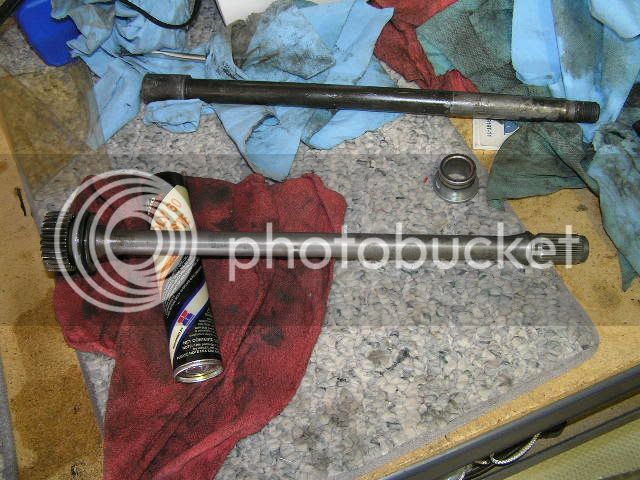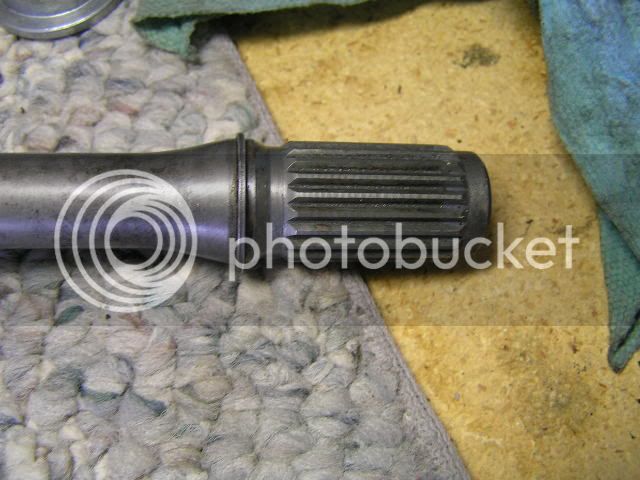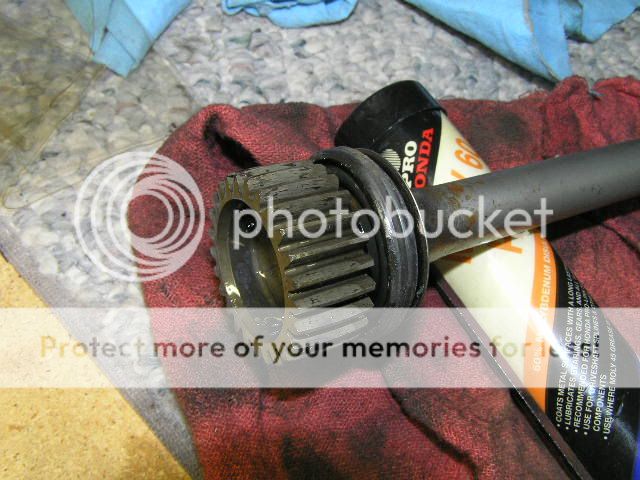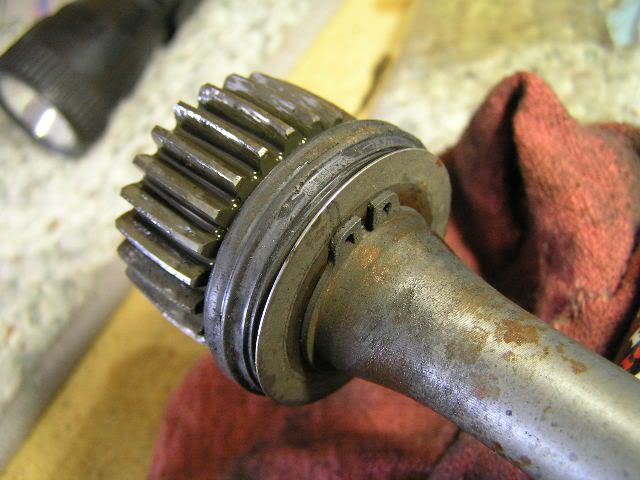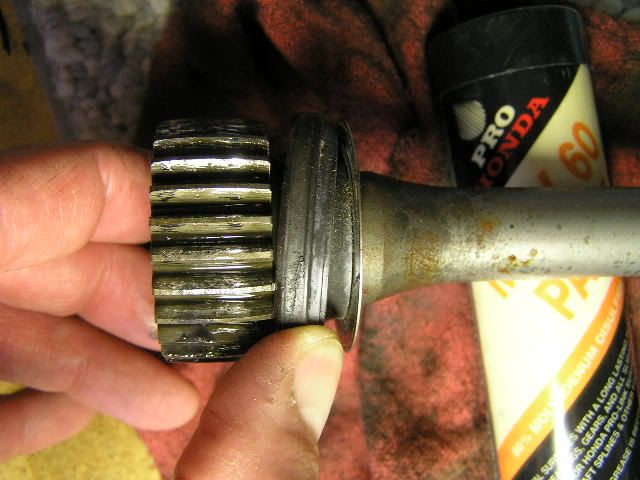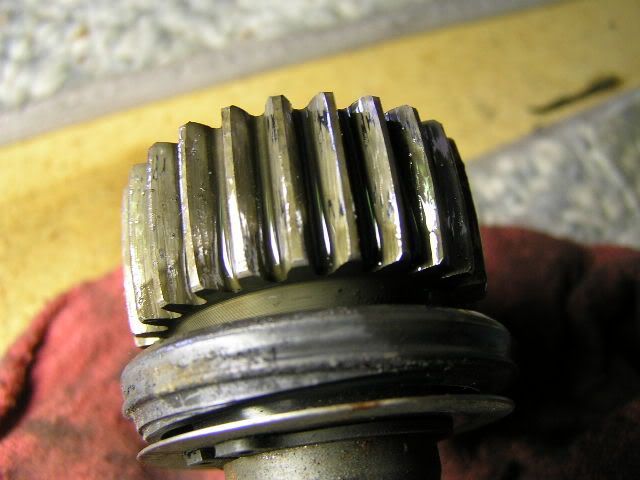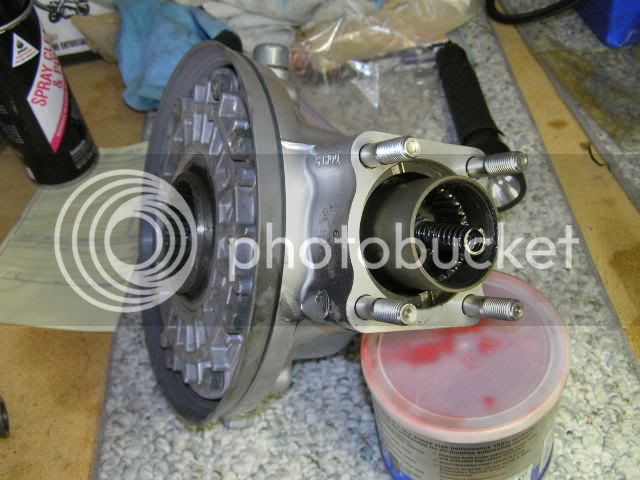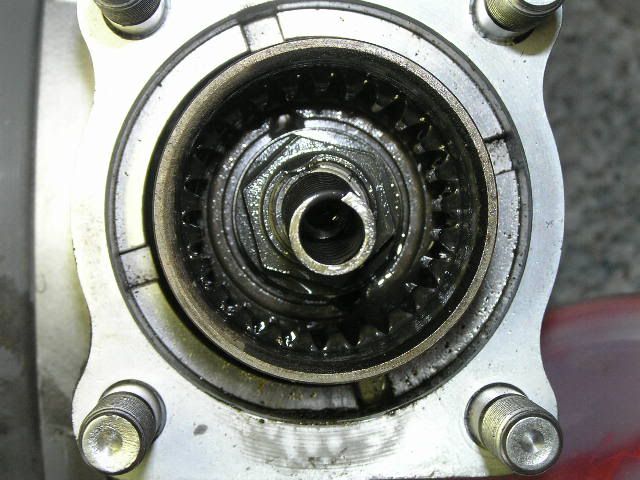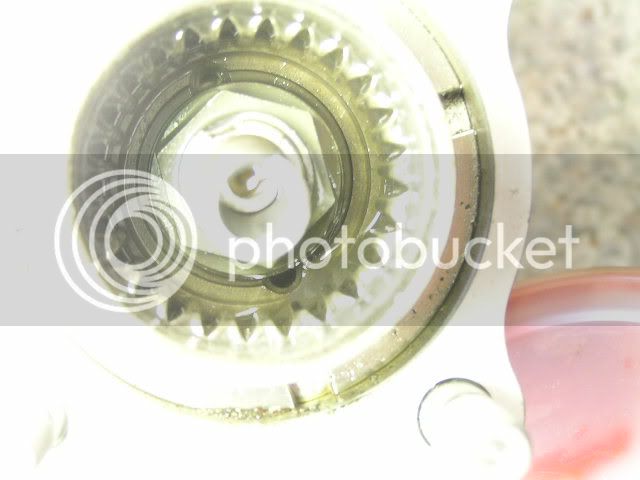Ok, as promised piccies.............
The driveshaft, removed from gear coupling. Some have had this mistakenly just fall out. I had to yank on it like I was trying to pull TDub away from some gerbils:
Front of driveshaft. Looking much better these days thanks to Warhchild's FJRTech.com how-to article and some periodic maintenance. It's a bit dry for my liking, but no corrosion and a light coat of moly60 paste everywhere. It's been a while since the last time I did a spline maintenance. Everything you see here will be cleaned and re-lubed before re-assembly:
Rear of driveshaft - first time apart in 64,500 miles No corrosion. Nothing funky. Well coated with final drive oil:
Close-up of rear of driveshaft. Splines, rubber oil seal, washer, and circlip.
Here's another shot of the rear of driveshaft/oil seal/washer/circlip. I am pulling away the outer part of the oil seal so you can see how the inner part of the seal is up against the washer. It's the washer/circlip which keep the oil seal where it belongs.
One last close-up of all these parts. Obviously, I will clean the rubber seal and re-grease.
Final drive, or "pumpkin" with driveshaft removed. Looking into the gear coupling. You can see the spring which keeps tension on the driveshaft:
Closer up, looking into gear coupling. Sorry for photo quality. I was having a hell of a time getting the proper light into the gear coupling for good photos. At 11:30, you can see one of the half moon oil passages:
I had to overexpose this photo, but at least you can get a decent view of both the oil passages (half moon shape) at 11:30 and 5:30. These are where the oil passes from the final drive to the gear coupling. When I first pulled the rear of the driveshaft out of the gear coupling, there was final drive oil pooled in this area that spilled everywhere. When I raised the gear coupling more upright, that oil drained back into the final drive.





